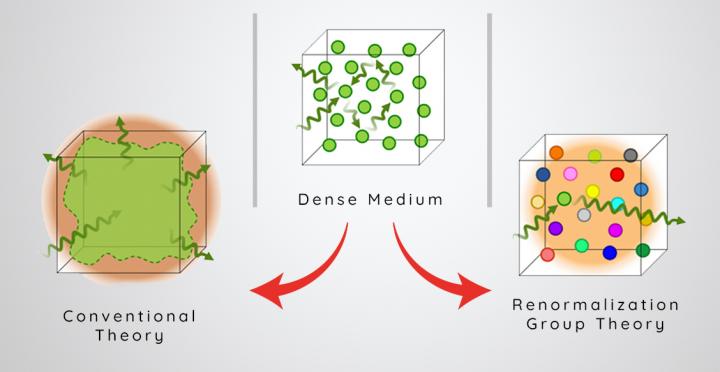
Credit: ICFO
Pink Floyd’s Dark Side of the Moon cover, voted the greatest classical rock album of all time, intended to portray the prism and dispersion of light into a rainbow as a certain metaphorical symbolism and a light show that was never celebrated. However, they really were not aware of the fact that this image would be used by many to help illustrate the concept of refractive index and how light changes speed and direction when it encounters a different medium.
Although conceptually the drawing was not accurate, it conveyed the message that light changes its speed when it moves into another medium, and that the different speeds of different colors causes white light to disperse into its different components. This change in speed is related to the refractive index, a unitless number that represents the ratio of the speed of light in vacuum and the speed of light in a medium.
In general, all materials with positive refractive indices have values close to 1 for visible light. Whether this is just a coincidence or reflects some deeper physics has never been explained.
Now, in a recent study published in Physical Review X and highlighted by the editors, ICFO researchers Francesco Andreoli and ICREA Prof. at ICFO Darrick Chang, in collaboration with researchers from Princeton University, University of Chicago and Institut d’Optique, have investigated and explained why the refractive index of a dilute atomic gas can only reach a maximum value of 1.7, regardless of how high the density of atoms becomes.
This result is in contrast with conventional textbook theories, which predict that the more material there is, the larger the optical response and refractive index can be. The challenge in properly understanding the problem has to deal with the multiple scattering of light – all the complex paths that light can traverse inside a medium – and the resulting interference. This can cause each individual atom to see a local intensity of light that is very different than the intensity sent in, and which varies depending on the geometry of the atoms surrounding it. Instead of dealing with the complex microscopic details of this granularity, textbooks often assume in some way that this granularity and its effects on light can be smoothed out.
In contrast, the teams makes use of a theory, called strong-disorder renormalization group (RG), which enables them to capture granularity and multiple scattering effects in a simple way. This theory shows that the optical response of any given atom is disproportionately affected by its single nearest neighbor because of near-field interactions, which is why typical smoothing theories fail. The physical effect of the near-field interactions is to produce an inhomogeneous broadening of atomic resonance frequencies, where the amount of broadening grows with density. Thus, no matter how high the physical density of atoms is, incoming light of any frequency will only see about 1 near-resonant atom per cubic wavelength to efficiently scatter off, which limits the refractive index to its maximum value of 1.7.
More broadly, this study suggests that the RG theory could constitute a new versatile tool for understanding the challenging problem of multiple scattering of light in near-resonant disordered media, including in the nonlinear and quantum regimes. It also shows the promise of trying to understand the limits of refractive index of real materials, starting bottom-up from the individual atoms of which they are composed.
###
Media Contact
Alina Hirschmann
[email protected]
Related Journal Article
http://dx.




